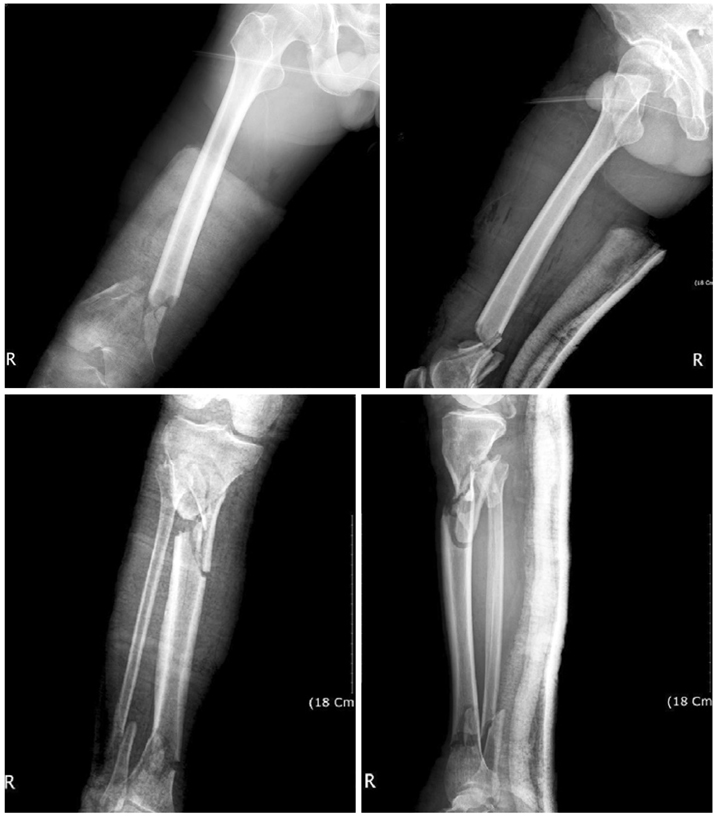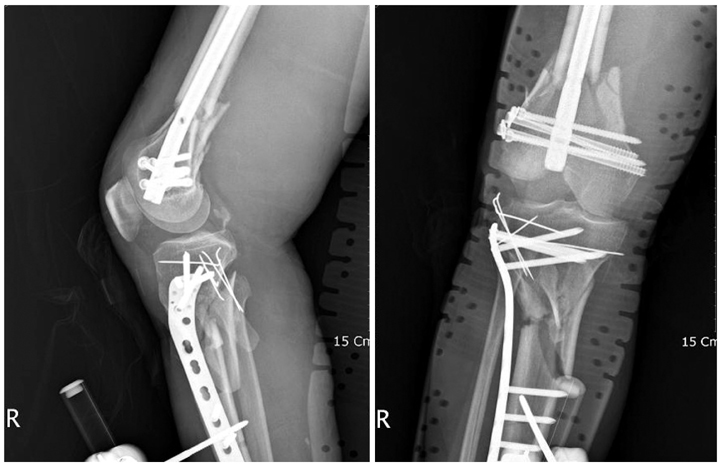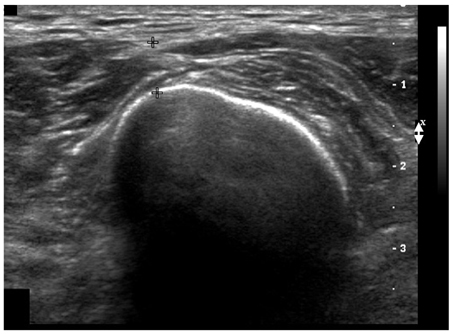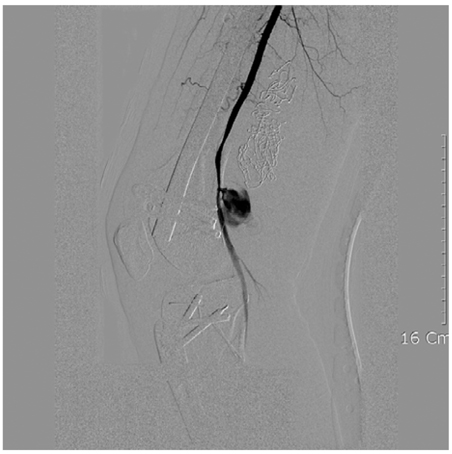Articles
- Page Path
- HOME > J Musculoskelet Trauma > Volume 20(3); 2007 > Article
-
Case Report
- Posterior Thigh Compartment Syndrome as a Result of Pseudoaneurysm of the Popliteal Artery in the Distal Femoral Fracture: A Case Report
- Seoung Jun Lee, M.D.
-
Journal of the Korean Fracture Society 2007;20(3):277-281.
DOI: https://doi.org/10.12671/jkfs.2007.20.3.277
Published online: June 14, 2016
Department of Orthopedic Surgery, Konkuk University College of Medicine, Seoul, Korea.
- Address reprint requests to: Seuong Jun Lee, M.D. Department of Orthopedic Surgery, Konkuk University Hospital, 4-12, Hwayang-dong, Gwangjin-gu, Seoul 143-701, Korea. Tel: 82-2-2030-7360, Fax: 82-2-2030-7369, lsjmd@kku.ac.kr
Copyright © The Korean Fracture Society. All rights reserved
- 457 Views
- 0 Download
- 2 Crossref
Figure & Data
REFERENCES
Citations
Citations to this article as recorded by 

- Huge Pseudoaneurysm of Popliteal Artery Following Conservative Treatment of a Distal Femur Fracture: A Case Report
Won-Chul Cho, Chong Bin Park, Young-Jun Choi, Hyun-Il Lee, Hee-Jae Won, Jae-Kwang Hwang
Journal of the Korean Fracture Society.2016; 29(2): 137. CrossRef - Is CT Angiography a Reliable Tool for Diagnosis of Traumatic Vessel Injury in the Lower Extremities?
Jong-Hyuk Park, Kwang-Bok Lee, Hyuk Park, Jun-Mo Lee
Journal of the Korean Fracture Society.2012; 25(1): 26. CrossRef
Posterior Thigh Compartment Syndrome as a Result of Pseudoaneurysm of the Popliteal Artery in the Distal Femoral Fracture: A Case Report





Fig. 1
Radiographies made on admission, showing comminuted fracture of the distal femur and proximal tibia.
Fig. 2
On the femoral angiogram, posterior tibial and peroneal arteries are not well visualized, but posterior tibial artery is faintly visualized through weak collateral flow.
Fig. 3
Postoperative radiographs of the knee joint.
Fig. 4
Sonogram shows 10×6 cm mass in the medial aspect of the thigh as like hematoma or abcess.
Fig. 5
Angiogram shows snowman appeared pseudoaneurysm in popliteal artery.
Fig. 1
Fig. 2
Fig. 3
Fig. 4
Fig. 5
Posterior Thigh Compartment Syndrome as a Result of Pseudoaneurysm of the Popliteal Artery in the Distal Femoral Fracture: A Case Report

 E-submission
E-submission KOTA
KOTA TOTA
TOTA TOTS
TOTS





 Cite
Cite

